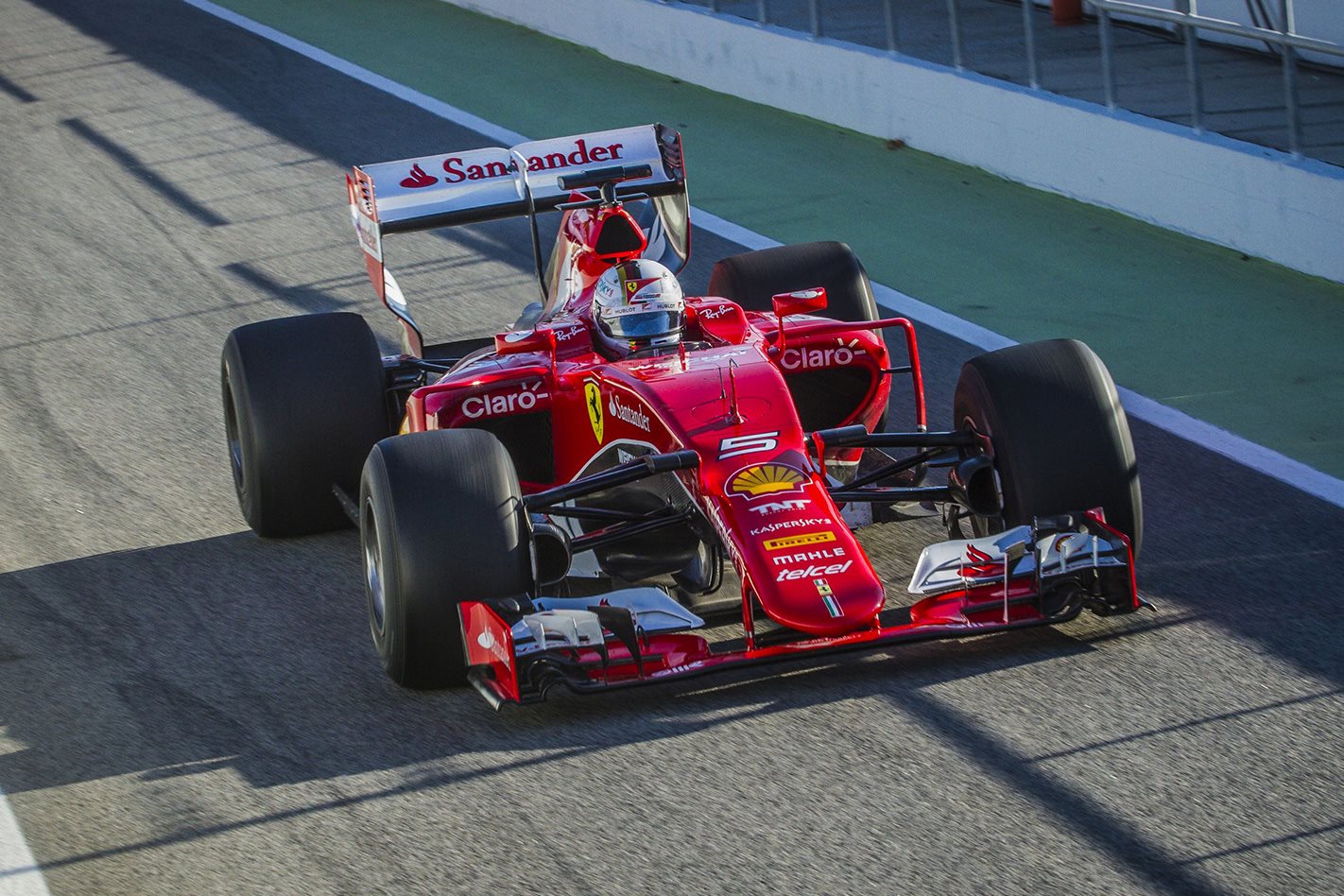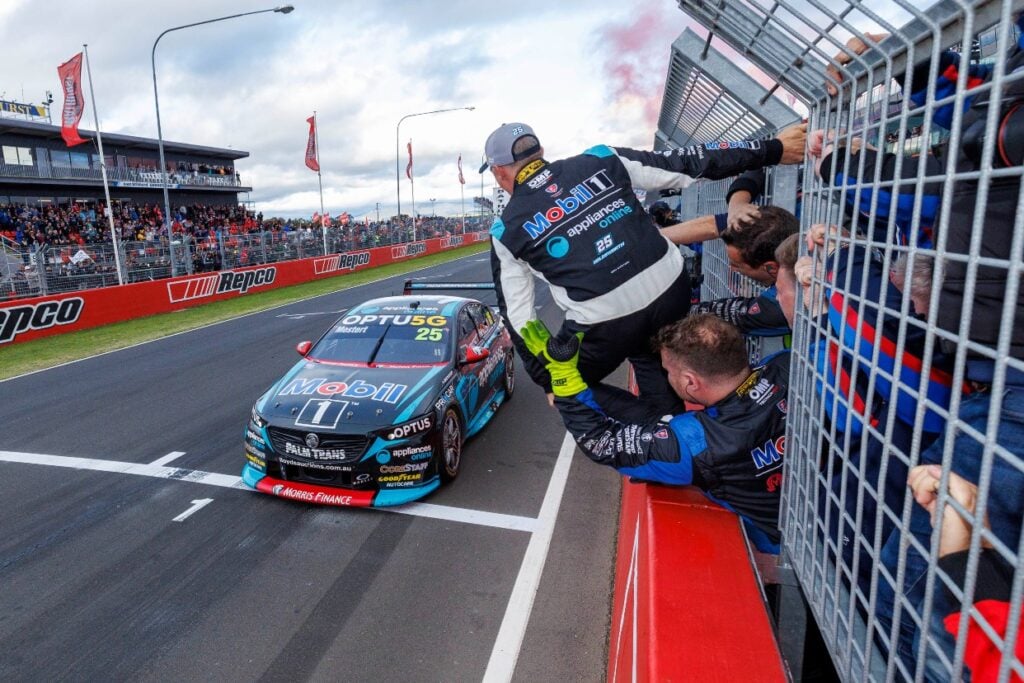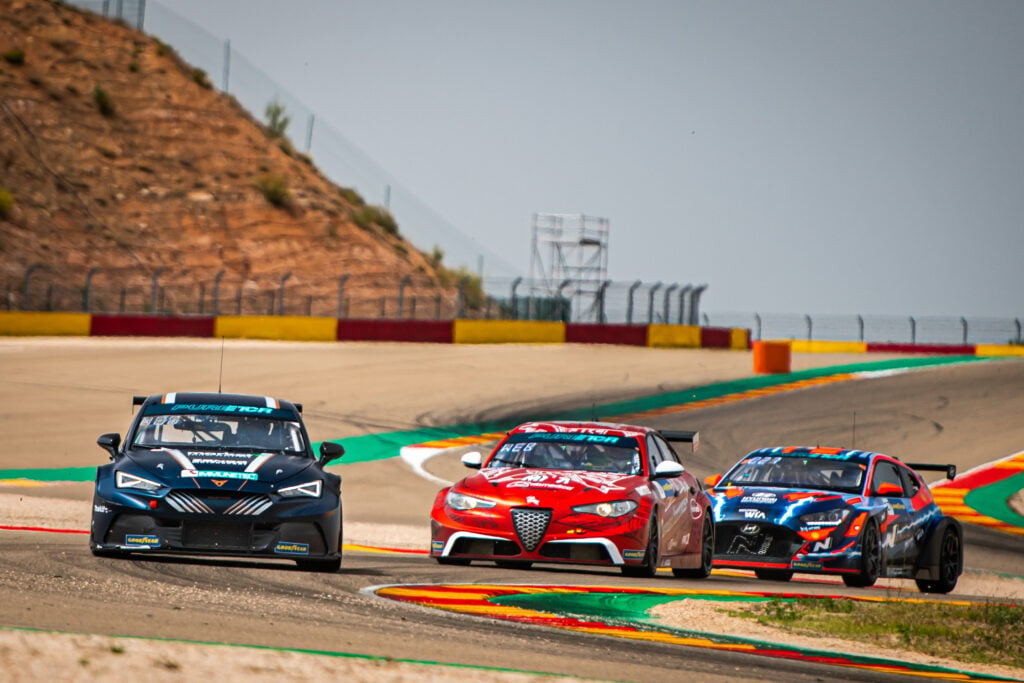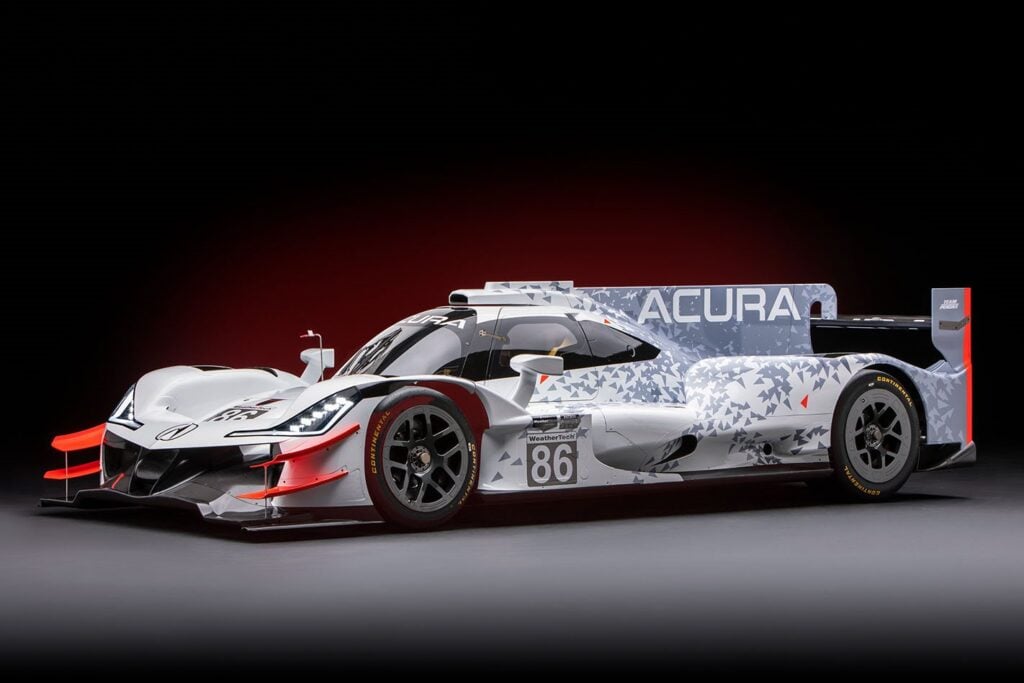Wider, gripper F1 tyres planned for the 2017 season pose as many questions under testing as they answer.
TEAMS using 2015 “mule” cars to test Pirelli’s back-to-the future new wide tyres for next season’s Formula One cars at Fiorano (with Ferrari), Mugello (Red Bull), Barcelona (Ferrari) and Paul Ricard (Mercedes) have provided some fascinating early data, and a few concerns.
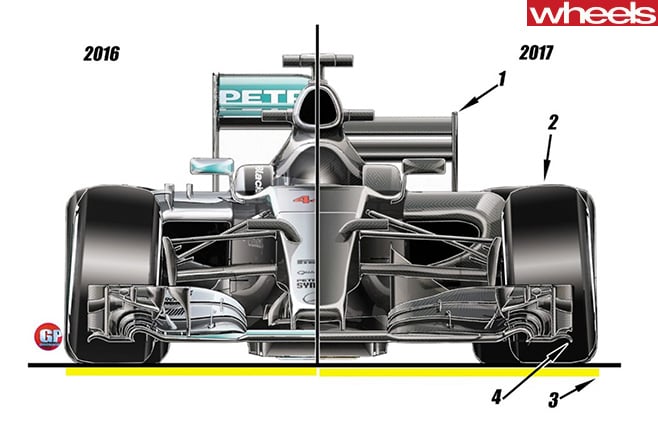
Next year’s cars will gain way more downforce because they’re 20cm wider and have bigger wings and a higher diffuser.
The clever blokes on the teams calculate the downforce will increase by 20 per cent at the start of the season, growing to 30 per cent by the end.
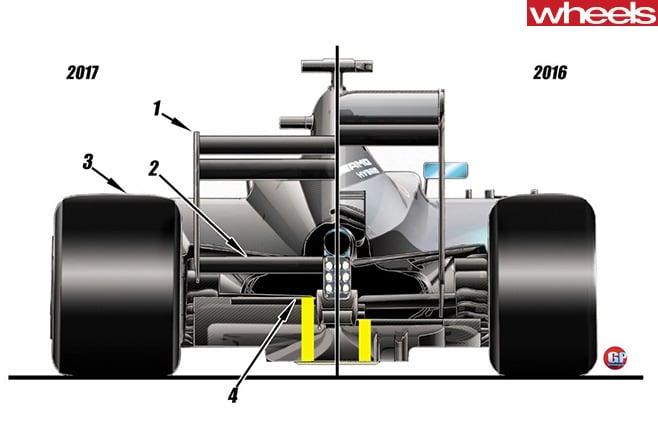
The overall outcome should be lap times three to four seconds faster.
There are concerns that the 2017 Pirellis, wider though they are, will not deal with the higher loads although the 2015 cars used in the tests will not accurately provide perfect results. The test cars have about 10 per cent more downforce than the current 2016 F1 cars, but projections suggest 30 per cent more next year, so accuracy is not possible: just calculated guesswork.
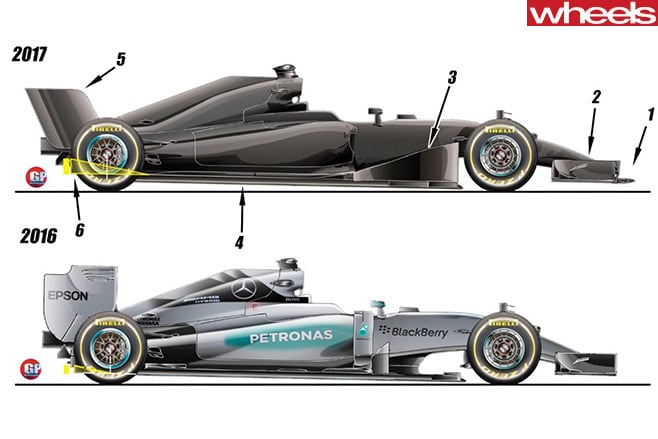
F1 in 2017
1. The nose of the car is 20cm longer than in 2016, while the width of the front wing increases from 165 to 180cm.
2. The wing’s new delta shape means the distance between the front tyre and the endplate remains unchanged, as does the endplate size.
3. The front tyres are wider, with tread width up from 24.5 to 30cm.4. The overall width of the car increases from 140 to 180cm.5. Rearward of the front of the cockpit, the car cannot be wider than 180cm.6. There must be a cut-out at some point to bring the body inside the 180cm maximum. 7. Another proposal prescribes a minimum body width of 160cm at all points, which means the cut-out cannot be more than 10cm deep.8. The rear tyres are also wider, with tread width up from 32.5 to 40cm. The extra footprint is expected to make cars around three seconds a lap faster.9. The rear wing is wider, up from 80 to 95cm, with a bigger overhang.
Source: F1.com

